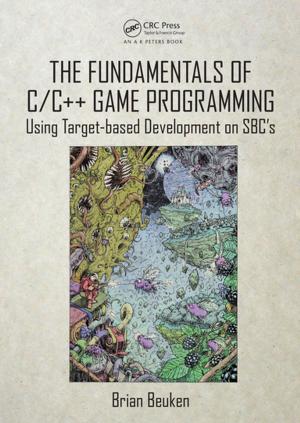A Human Error Approach to Aviation Accident Analysis
The Human Factors Analysis and Classification System
Nonfiction, Science & Nature, Technology, Aeronautics & Astronautics| Author: | Douglas A. Wiegmann, Scott A. Shappell | ISBN: | 9781351962353 |
| Publisher: | CRC Press | Publication: | December 22, 2017 |
| Imprint: | Routledge | Language: | English |
| Author: | Douglas A. Wiegmann, Scott A. Shappell |
| ISBN: | 9781351962353 |
| Publisher: | CRC Press |
| Publication: | December 22, 2017 |
| Imprint: | Routledge |
| Language: | English |
Human error is implicated in nearly all aviation accidents, yet most investigation and prevention programs are not designed around any theoretical framework of human error. Appropriate for all levels of expertise, the book provides the knowledge and tools required to conduct a human error analysis of accidents, regardless of operational setting (i.e. military, commercial, or general aviation). The book contains a complete description of the Human Factors Analysis and Classification System (HFACS), which incorporates James Reason's model of latent and active failures as a foundation. Widely disseminated among military and civilian organizations, HFACS encompasses all aspects of human error, including the conditions of operators and elements of supervisory and organizational failure. It attracts a very broad readership. Specifically, the book serves as the main textbook for a course in aviation accident investigation taught by one of the authors at the University of Illinois. This book will also be used in courses designed for military safety officers and flight surgeons in the U.S. Navy, Army and the Canadian Defense Force, who currently utilize the HFACS system during aviation accident investigations. Additionally, the book has been incorporated into the popular workshop on accident analysis and prevention provided by the authors at several professional conferences world-wide. The book is also targeted for students attending Embry-Riddle Aeronautical University which has satellite campuses throughout the world and offers a course in human factors accident investigation for many of its majors. In addition, the book will be incorporated into courses offered by Transportation Safety International and the Southern California Safety Institute. Finally, this book serves as an excellent reference guide for many safety professionals and investigators already in the field.
Human error is implicated in nearly all aviation accidents, yet most investigation and prevention programs are not designed around any theoretical framework of human error. Appropriate for all levels of expertise, the book provides the knowledge and tools required to conduct a human error analysis of accidents, regardless of operational setting (i.e. military, commercial, or general aviation). The book contains a complete description of the Human Factors Analysis and Classification System (HFACS), which incorporates James Reason's model of latent and active failures as a foundation. Widely disseminated among military and civilian organizations, HFACS encompasses all aspects of human error, including the conditions of operators and elements of supervisory and organizational failure. It attracts a very broad readership. Specifically, the book serves as the main textbook for a course in aviation accident investigation taught by one of the authors at the University of Illinois. This book will also be used in courses designed for military safety officers and flight surgeons in the U.S. Navy, Army and the Canadian Defense Force, who currently utilize the HFACS system during aviation accident investigations. Additionally, the book has been incorporated into the popular workshop on accident analysis and prevention provided by the authors at several professional conferences world-wide. The book is also targeted for students attending Embry-Riddle Aeronautical University which has satellite campuses throughout the world and offers a course in human factors accident investigation for many of its majors. In addition, the book will be incorporated into courses offered by Transportation Safety International and the Southern California Safety Institute. Finally, this book serves as an excellent reference guide for many safety professionals and investigators already in the field.















